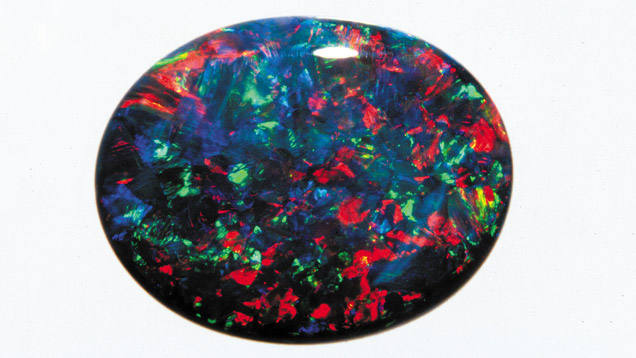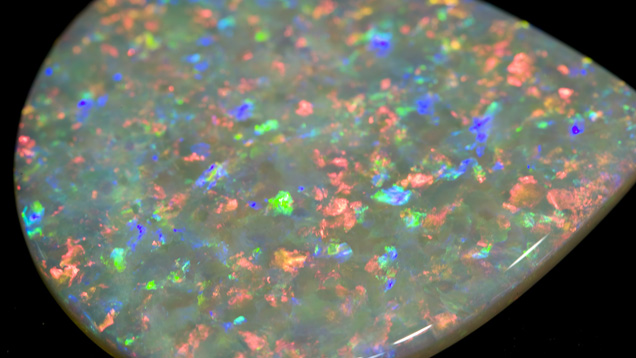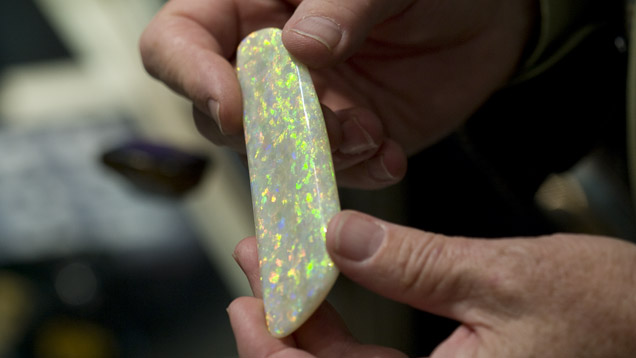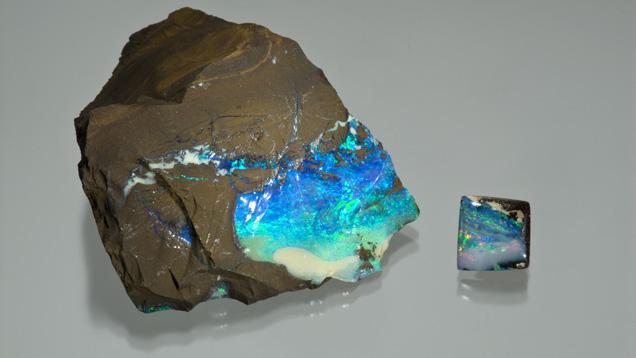Birthstone of October--Opal
Because opal has the colors of other gems, the Romans thought it was the most precious and powerful of all. The Bedouins believed that opals contained lightning and fell from the sky during thunderstorms. When Australia’s mines began to produce opals commercially in the 1890s, it quickly became the world’s primary source for this October birthstone
During dry periods, much of the water evaporated, leaving solid deposits of silica in the cracks and between the layers of underground sedimentary rock. The silica deposits formed opal.
How Opal Forms
Opal is known for its unique display of flashing rainbow colors called play-of-color. There are two broad classes of opal: precious and common. Precious opal displays play-of-color, common opal does not.
Play-of-color occurs in precious opal because it’s made up of sub-microscopic spheres stacked in a grid-like pattern—like layers of Ping-Pong balls in a box. As the lightwaves travel between the spheres, the waves diffract, or bend. As they bend, they break up into the colors of the rainbow, called spectral colors. Play-of-color is the result.

This black opal exhibits exceptional play-of-color. - Courtesy Cody Opal
The color you see varies with the sizes of the spheres. Spheres that are approximately 0.1 micron (one ten-millionth of a meter) in diameter produce violet. Spheres about 0.2 microns in size produce red. Sizes in between produce the remaining rainbow colors.
This fine-quality light opal is from Mintabie, South Australia. Almost all of its spectral colors are visible from a variety of viewing angles. - Courtesy Cody Opal
Although experts divide gem opals into many different categories, five of the main types are:- White or light opal: Translucent to semitranslucent, with play-of-color against a white or light gray background color, called bodycolor.
- Black opal: Translucent to opaque, with play-of-color against a black or other dark background.
- Fire opal: Transparent to translucent, with brown, yellow, orange, or red bodycolor. This material—which often doesn’t show play-of-color—is also known as “Mexican opal.”
- Boulder opal: Translucent to opaque, with play-of-color against a light to dark background. Fragments of the surrounding rock, called matrix, become part of the finished gem.
- Crystal or water opal: Transparent to semitransparent, with a clear background. This type shows exceptional play-of-color.

This exceptional light opal is from South Australia’s Coober Pedy opal fields. - Courtesy Cody Opal

The rough specimen is a thin seam of boulder opal on sandstone host rock. The 3.47-carat boulder opal tablet was cut from a similar piece of rough.

